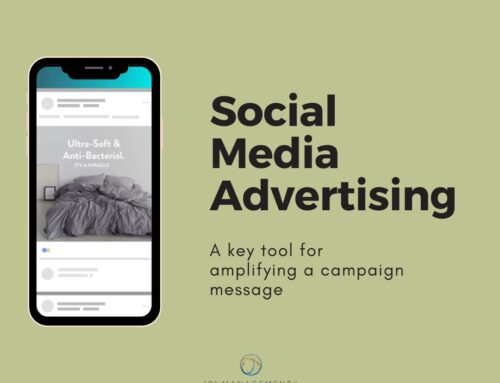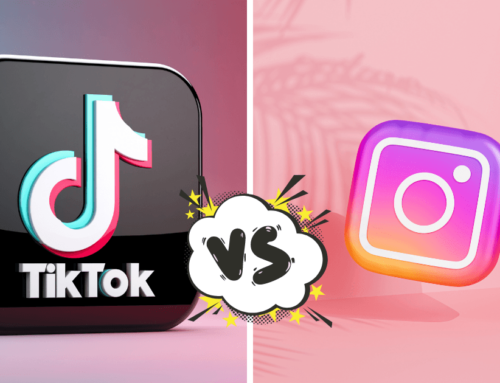How do you choose the best social media platform for marketing your business?
You shouldn’t pick one because it’s the one you’re most comfortable using. And you shouldn’t try to guess which social media platform will do the most for your bottom line. You need to know your customers well enough to know which site will most likely result in conversions for your business.
The best social media platform for your marketing is the one that will provide the largest return for your investment of time, attention, and money.
Focus for success
But why do you have to pick just one?
Actually, you don’t. You can focus your time and resources on two or even three, if you can handle them all well. But the worst thing you can do is to spread yourself across so many platforms that you don’t do a good job of presenting a professional-looking brand to your fans and potential customers.
Because, let’s face it, there are only so many hours in a day. And there’s only so much time you’ll be able to devote to social media without neglecting other vital aspects of your business.
In addition, a small business has a limited amount of resources to devote to advertising. So you want to make sure you’re getting the biggest return on your investment.
So here’s a capsule view of the five major social media sites (of the hundreds available) that marketers use most often, and how they might apply to your particular business.
Literally the granddaddy of them all. Facebook is by far the most popular social media site, with 2.7 billion monthly active users, or one billion a day.
Every demographic uses Facebook regularly, so it’s easy to target the ones you want to reach through advertising.
This platform is becoming “pay for play” more and more every day. It may be free to post, but if you want users to see your content, you’re going to need to have an advertising budget.
The average post engagement rate for Facebook pages with less than 10K fans is 0.45 percent. Don’t be surprised when no one sees or engages with the content you’ve worked so hard to create.
Instagram runs Facebook a close second, with one billion monthly active users. Originally created as a photo-sharing platform, it has expanded into videos, including the popular Instagram Stories feature.
Instagram, owned by Facebook, appeals to all demographics, but it mainly attracts the millennial-and-younger audience. Regular use of Instagram Stories can be an important part of your social media marketing strategy. More than 300 million people view Instagram Stories every day.
With 367 million monthly active users, Pinterest trails the Big Two by a wide margin. However, its users are unique in that they’re specifically going there with the ultimate goal of making a purchase. So if you have a business that easily lends itself to visual images, you will definitely want to consider investing your time on Pinterest.
Research shows two-thirds of all pins saved on Pinterest are from businesses. Eighty-seven percent of pinners have purchased a product because of Pinterest. And 93 percent have used Pinterest to plan a future purchase.
In addition, Pinterest can convert to sales faster than any other social media website.
It’s difficult to market directly from Twitter, but for building brand awareness, it can’t be beaten. With its 330 million monthly active users, you can post photos and videos, as well as share links, and connect more rapidly with your followers. Plus, because its content is organized by hashtags, it allows your fans to find you more easily.
The best thing about Twitter is that it can allow your posts to go viral. This allows you to gain followers as your posts are “retweeted” to other users.
LinkedIn was originally conceived as a place for businesses to find prospective employees. It now has 310 million active users, but it’s geared more for business-to-business (B2B) than business-to-customer (B2C) interaction.
While this is not the best place to look for new customers, LinkedIn is the place to showcase your brand. So at the very least, you should have an attractive company page on the site.
TikTok
The new kid on the block. TikTok has grown exponentially since the death of Vine and the the rise of the pandemic. The app boasts 100 million active monthly users in the U.S., and globally, it surpassed 2 billion downloads.
This platform is all about funny, intriguing or informational 60-second-max videos. And dancing. Through the use of popular TikTok Sounds and participating in viral challenges, TikTok has created its own brand of influencer and solidified itself as the app of the pandemic for Gen Z and some curious Millennials.
While it might not make sense for your brand to participate in a popular TikTok dance challenge, use the platform to educate and spark a conversation. Can you show how your product is made? Can you provide styling tips for your merchandise? What about teaching people about a common problem that your product or service can fix or treat? Create a multi-part series that showcases what you have to offer. And always encourage users to like and follow your page for information they can’t get anywhere else.
Which should you focus on?
As we said, you can’t do it all and do it well. As for which platforms to use, a great deal depends on…
- the type of business or product you have.
- where your prospective customers are likely to be the most active.
- how much time you can devote to your social media marketing strategy.
If you’re still not sure which platform to focus on, or you want to maintain a presence on more than one platform, our social media management experts can easily handle some or all of your social media marketing for you, and help you decide which platforms will be best for your particular business.










Leave A Comment